Posted by
amayrasharma
on
October 26, 2024
|
Posted by
Sumeet Chopra
on
October 23, 2024

-
Agra is a city that effortlessly blends historical grandeur with modern charm, attracting visitors from around the world. Famous for the iconic Taj Mahal, Agra offers a range of experiences,
from exploring its rich history to indulging in luxury stays. Whether you're planning a luxurious getaway or looking for budget-friendly travel, Agra tour packages cater
to every need. These packages offer convenience, covering accommodations, sightseeing, and transportation, making your trip seamless and enjoyable.
Exploring Agra: Luxury Tour Packages
If you're looking to experience Agra in style, luxury tour packages offer an unmatched experience. These high-end packages typically include stays in five-star hotels, guided tours with
knowledgeable historians, and private transportation options. You can start your journey by visiting the world-renowned Taj Mahal, a UNESCO World Heritage site and one of the Seven Wonders of the World. A guided tour of the Taj allows you to dive deep into
its fascinating history, from its architectural brilliance to its romantic legacy.
Luxury packages often extend beyond the Taj Mahal, offering tours of the Agra Fort, an equally magnificent site that tells the story of the Mughal Empire. Visitors also get to explore the
serene Mehtab Bagh, where they can catch breathtaking views of the Taj Mahal during sunset. Gourmet dining experiences, exclusive spa treatments, and personalized services at premium hotels add to the luxury experience.
Budget-Friendly Agra Tour Packages
For travelers on a budget, Agra also offers economical tour packages that don’t compromise on the overall experience. These budget-friendly options provide comfortable accommodations, transportation,
and guided tours at affordable prices. Many budget tours focus on the essential attractions, including the Taj Mahal and Agra Fort, ensuring that you don't miss the key highlights of the city.
Budget packages often include group tours, which provide an excellent opportunity to meet fellow travelers and share the experience. To make your trip even more cost-effective, some packages
offer combined itineraries that include nearby attractions like Fatehpur Sikri, another UNESCO World Heritage site, which lies just an hour’s drive from Agra.
Combining Agra with Rameshwaram: A Spiritual and Cultural Experience
For those seeking a spiritual journey, combining your Agra trip with a pilgrimage to Rameshwaram offers a unique experience. Rameshwaram, located in Tamil Nadu, is one of the most revered
Hindu pilgrimage destinations and is known for its sacred temples and serene landscapes. There are specialized Rameshwaram tour packages that include guided temple tours,
accommodations, and seamless travel arrangements.
If you're based in Delhi, you can easily find Delhi to Rameshwaram tour packages that streamline
your travel. These packages typically include flights or train travel from Delhi to Rameshwaram, along with guided tours of the Ramanathaswamy Temple, the Dhanushkodi beach, and other sacred sites in the area. Combining the cultural richness of Agra with the
spiritual depth of Rameshwaram makes for a well-rounded travel experience.
Planning the Perfect Trip
When choosing between Agra tour packages and Rameshwaram
tour packages, it's important to consider what type of experience you're seeking. For those interested in history and architecture, Agra offers a deep dive into India’s Mughal past, while Rameshwaram promises a spiritual retreat.
For travelers with time, combining both destinations is an ideal way to experience the best of India’s cultural and spiritual heritage. Delhi
to Rameshwaram tour packages make it easy to arrange seamless travel, and many operators offer the flexibility to include a stop in Agra as part of a longer itinerary. This way, you can experience the grandeur of the Taj Mahal and the sacred beauty
of Rameshwaram in one well-organized trip.
Conclusion
Whether you're exploring the architectural wonders of Agra or seeking spiritual solace in Rameshwaram, there are plenty of travel packages to suit your needs. From luxurious getaways to
budget-friendly adventures, Agra
tour packages and Rameshwaram
tour packages offer a range of options for travelers. With well-curated Delhi to Rameshwaram tour packages, you can easily combine these two iconic destinations
for an unforgettable journey. Plan your trip today and get ready to explore the best of India!
|
Posted by
Sumeet Chopra
on
October 23, 2024

Karnataka is a state that truly offers something for every traveler. Whether you’re seeking adventure in the hills, serenity by the beaches, or a spiritual retreat, Karnataka caters to all travel moods. The diverse landscape, rich cultural heritage, and historical
significance make it an ideal destination for family vacations, solo travelers, or group tours. With a variety of Karnataka tour packages available, travelers can explore its charm in a way that best
suits their interests. From bustling cities to peaceful landscapes, Karnataka is a complete package for every type of tourist.
Discovering Karnataka’s Natural Wonders
Karnataka’s geographical diversity is one of its biggest draws. From the sun-kissed beaches of the Arabian Sea to the lush, rolling hills of Coorg and Chikmagalur, nature lovers are in for a treat. Karnataka
tour packages often feature itineraries that highlight these scenic wonders, making it easy for visitors to experience the best the state has to offer.
The beaches of Karnataka, such as Gokarna, Karwar, and Malpe, are perfect for those looking to unwind and enjoy the sea breeze. Unlike the crowded beaches of Goa, Karnataka’s coastal towns offer quieter, less commercialized retreats where you can relax in peace.
Whether you’re planning a romantic getaway or a peaceful family vacation, the beaches in Karnataka have something for everyone.
For travelers who prefer the hills, Coorg and Chikmagalur are must-visit destinations. Known for their coffee plantations, misty landscapes, and trekking trails, these hill stations are perfect for adventure lovers and nature enthusiasts. Families can enjoy
nature walks, waterfall treks, and visits to spice farms, while adventure seekers can engage in more challenging hikes and thrilling activities like river rafting.
Ideal Family Getaways
For families looking to explore the best of Karnataka together, the Karnataka family tour packages offer well-curated itineraries that blend relaxation, adventure, and cultural experiences. Bangalore,
the state’s capital, is often the starting point for many family tours. From there, families can travel to Mysore, where they can explore the famous Mysore Palace, Chamundi Hills, and the vibrant markets.
Children and adults alike will love the attractions in Kabini, a wildlife haven. Families can embark on safari tours to spot elephants, leopards, and other wildlife species. The scenic Kabini River offers boat rides that add an element of fun and excitement
to the trip.
A visit to Hampi, a UNESCO World Heritage Site, is another great addition to a family itinerary. The ancient ruins of the Vijayanagara Empire captivate visitors with their architectural grandeur and historical significance. Exploring the temples and ruins together
as a family makes for a memorable educational experience.
Spiritual and Pilgrimage Tours
Karnataka is also a significant spiritual destination, offering numerous pilgrimage sites that attract travelers from all over India. Many Karnataka tour packages include visits to renowned temples
like the Virupaksha Temple in Hampi, the Chamundeshwari Temple in Mysore, and the ISKCON Temple in Bangalore.
For those seeking a more dedicated spiritual experience, Tirupati tour packages are a popular choice. While Tirupati is located in Andhra Pradesh, it is easily accessible from Karnataka, and many travel
packages include trips to this revered pilgrimage site. Tirupati’s Venkateswara Temple, one of the most visited temples in the world, draws millions of devotees annually. Combining Karnataka’s spiritual sites with a trip to Tirupati offers a holistic spiritual
journey for devout travelers.
Adventure and Wildlife Escapades
For those with a thirst for adventure, Karnataka does not disappoint. The state is home to numerous wildlife sanctuaries and national parks, offering opportunities for thrilling wildlife safaris and nature treks. Bandipur National Park, Nagarhole National Park,
and Dandeli Wildlife Sanctuary are some of the best places to witness Karnataka’s diverse wildlife. From tigers and elephants to exotic birds and reptiles, the state’s biodiversity is truly remarkable.
MICE event management companies often incorporate these wildlife experiences into corporate team-building events, offering a unique blend of business and leisure in the heart of nature. From jungle
safaris to eco-friendly resorts, Karnataka offers corporate travelers a chance to reconnect with nature while fostering team spirit.
Tailored Tour Packages for Every Mood
One of the key benefits of booking Karnataka tour packages is the flexibility and customization they offer. Whether you’re traveling with family, friends, or colleagues, you can choose from packages
that suit your specific needs. For families, itineraries are designed to balance sightseeing with relaxation. For couples, romantic retreats in Coorg or beach vacations in Gokarna provide the perfect backdrop for intimate escapes.
On the other hand, for solo travelers or those looking for spiritual enlightenment, Tirupati
tour packages offer a well-organized pilgrimage experience, often combined with visits to other spiritual sites in Karnataka. Similarly, adventure seekers can find tours that focus on trekking, wildlife safaris, and water sports, ensuring a thrilling
experience in the hills and forests of Karnataka.
Conclusion
Whether you are looking to soak in the sun on the beaches, find tranquility in the hills, embark on a spiritual journey, or experience the thrill of the wild, Karnataka has it all. The wide variety of Karnataka
tour packages available ensures that every traveler finds their perfect adventure. With options for families, solo travelers, and corporate groups alike, Karnataka is the ultimate destination for a diverse and fulfilling travel experience. So, pack
your bags and get ready to explore this beautiful state where every corner has a story waiting to be discovered!
|
Posted by
Neha
on
October 22, 2024

Introduction to Tadoba National Park
Tadoba National Park, often called the
Tadoba Andhari Tiger Reserve,
is one of India’s most famous wildlife sanctuaries. Nestled in the Chandrapur
district of Maharashtra, Tadoba is a haven for nature lovers, wildlife enthusiasts, and especially tiger seekers.
The
park’s allure lies in its rich biodiversity, stunning landscapes, and
the chance to see the royal Bengal tigers up close.
But what exactly makes Tadoba so
special?
Let’s dive into the wonders this park has to offer.
Why is Tadoba Famous?
The spotlight in Tadoba belongs to its Bengal Tigers. With an estimated 80-100 tigers living within the core and buffer zones, Tadoba boasts one of
India’s most thriving tiger populations. But the park
isn’t just about tigers; it also shelters leopards, sloth bears, dholes
(wild dogs), gaur (Indian bison), and over 200 bird species.
Whether
you're a
wildlife photographer or just a nature enthusiast, Tadoba is a must-visit destination.
Why Should You Visit Tadoba?
Tadoba offers a unique blend of excitement and serenity.
The thrill of spotting a tiger in the wild, combined with
the calmness of the surrounding teak forests,
creates an unforgettable experience.
From jeep safaris to eco-friendly lodges, Tadoba is perfect for those looking to immerse themselves in nature. Plus, the diverse range of wildlife ensures that each visit
is different.
Best Places to Stay in Tadoba
Your accommodation choice can make or break your experience at Tadoba National Park. Luckily, Tadoba offers a variety of stays best resorts, budget lodges, and jungle camps
that cater to all types of travellers.
Zeal Resort Tadoba
If
you’re looking for luxury,
Zeal
Resort Tadoba is a top-notch option located near Chimur Gate. This resort combines modern amenities with a rustic, nature-centric atmosphere. Guests
rave about the comfortable cottages, delicious meals, and guided jungle safaris, making it one of the most popular places to stay.
Tadoba Safari Stay
Tadoba
Safari Stay is a fantastic option for budget travellers
looking to explore the wildlife of Tadoba National Park.
Located near the popular Moharli Gate, this accommodation provides a
cosy and comfortable stay with all the necessary amenities for a memorable
jungle safari.
Whether
you're here for a quick wildlife tour or an extended stay, Tadoba Safari
Stay offers a simple yet enjoyable experience. With easy access to jungle safari adventures and affordable
tour packages, it’s
a great choice for nature lovers who want to experience the beauty of Tadoba without spending too much.
Exploring Tadoba: Jungle Safari Options
Of course, the real adventure in Tadoba is its
jungle safaris.
Whether you're venturing out on a private jeep or sharing a canter with
other wildlife lovers, the safari experience is exhilarating.
Booking your safari in advance is essential, especially during peak seasons.
You can
either book through the
official Tadoba National Park website
or your hotel or resort. Many resorts like Zeal Resort
,tadoba safari stay and Nature's Sprout Singh Estate offer assistance with booking safaris, ensuring you get the best experience.
Types of Safaris in Tadoba
-
Jeep Safari:
Ideal for small groups or wildlife photographers, jeep safaris offer a more personal and flexible experience.
-
Canter Safari:
For larger groups, canter safaris are a cost-effective way to explore the park. These vehicles hold up to 20 people, making them a popular choice for families and friends.
-
Night Safari:
A lesser-known option, night safaris provide a rare chance to see nocturnal animals like owls, leopards, and civets.
Tadoba
is divided into several safari zones. The
Tadoba Core Zone
is the most popular due to frequent tiger sightings. For a quieter, more serene experience, consider the
Junona
Gate or
Pangdi Gate,
where visitor traffic is lower but wildlife sightings are still common.
Safari Timings and Seasons
Tadoba offers two safari slots
per day: one in the early morning and another in the late afternoon.
The best time for tiger sightings is during the dry summer months (March to June) when animals are more likely to gather near water bodies.
Tadoba’s
Tiger Population and Wildlife
How Many Tigers Are There in Tadoba?
Tadoba is home to around 100-115 Bengal Tigers, making it one of the most tiger-dense reserves in India. The core and buffer zones provide the perfect habitat
for these apex predators. And while tiger sightings are never guaranteed, Tadoba offers some of the best chances to see them in the wild.
Other Wildlife in Tadoba
While tigers are undoubtedly the
stars of the show, Tadoba is teeming with other wildlife.
-
Leopards:
Frequently spotted in the park’s buffer zones.
-
Sloth Bears:
These shy creatures are often seen rummaging
through the park’s hilly areas.
-
Dholes (Wild Dogs):
Known for their hunting prowess, these social animals are commonly seen
in packs.
-
Birds:
With over 200 bird species, including crested serpent eagles and paradise flycatchers, Tadoba is a
birdwatcher’s dream.
Planning a Tadoba and Pench Combo Trip
Why limit your wildlife adventure to just Tadoba? Many travellers combine their trip with a visit to the nearby Pench National Park, known as the inspiration for
Rudyard Kipling's The Jungle Book.
With Tadoba and Pench National Park packages, you can experience the best of both worlds. These parks offer the
best jungle safaris and beautiful views.
Choose the
Tadoba and Pench package to enjoy abundant wildlife, including Bengal tigers, leopards, and exotic bird species.
For a seamless trip, consider the Pench to Tadoba Jungle Safari package
that includes
transportation, accommodation, and guided safaris in both parks.
Differences Between Tadoba and Pench
-
Tadoba:
Dense teak forests and a higher concentration of tigers.
-
Pench:
More open landscapes with grasslands, bamboo forests, and a lower tiger density but more diverse birdlife.
Travel Distances
-
Pune to Tadoba:
About 720 km (12-13 hours by road).
-
Nagpur to Tadoba:
Only 140 km, making Nagpur the closest major city.
-
Tadoba to Pench:
Roughly 250 km, about a 5-6 hour drive.
Tadoba Tour Packages from Nagpur
Several tour operators offer
Tadoba tour packages
that include safaris, accommodation, and transportation. Here’s what
you can expect:
Types of Tour Packages
-
2 Nights/3 Days Package:
Includes two safari rides, accommodation at a mid-range resort like Zeal Resort,Tadoba
Safari Stay and meals.
-
3 Nights/4 Days Tadoba and Pench Tiger Safari Package:
Ideal for those who want to experience both Tadoba and Pench. This package
includes safaris in both parks, lodging, and transfers.
-
Custom Safari Packages:
Tailored to suit your needs, whether you want more safari rides, specific accommodations, or guided birdwatching tours.
While Tadoba is open from October to June, the best time to visit for wildlife sightings, especially tigers, is during the
dry season from March to June.
This is when animals congregate near water sources, increasing your chances
of seeing them.
Conclusion
In conclusion, Tadoba National Park is a must-visit destination for wildlife enthusiasts, nature lovers, and those seeking an unforgettable jungle safari experience. Its rich biodiversity, especially its thriving tiger population, makes it one of the best
places in India to witness Bengal tigers in the wild.
Whether you choose to stay at a best resort like Zeal Resort or opt for budget-friendly options like Tadoba Safari Stay, you’ll find accommodations that suit your needs. With thrilling safari adventures and scenic landscapes, Tadoba offers a perfect blend
of excitement and tranquility for all visitors.
FAQs
How many tigers are there in Tadoba?
Tadoba has approximately 80-100 Bengal Tigers, making it one of
India’s most sought-after destinations for tiger sightings.
What is the best time to visit Tadoba?
The best time for tiger sightings is between March and June. However, the park remains open from October to June.
How far is Tadoba from Pune?
Tadoba is about 720 km from Pune, which takes around 12-13 hours by road.
How do I book a jungle safari in Tadoba?
You can book safaris online via the official Tadoba website or through your accommodation provider.
It’s best to book
in advance, as safari slots fill up quickly.
Which is the best resort in Tadoba?
Zeal Resort ,Tadoba
Safari Stay is among the top-rated resorts, offering best stays near the
park’s Chimur Gate and Madhai gate.
|
Posted by
Mountains Shape Heart
on
October 19, 2024

The
Dayara Bugyal Trek Package provide by Himalayan Daredevils Treks (HDT) was one of the most unforgettable experiences of my life.
From the moment we set foot in Uttarkashi, the warmth and professionalism of the HDT team made the entire journey smooth and enjoyable.
The trek to Dayara Bugyal, one of the most beautiful alpine meadows in Uttarakhand, was nothing short of magical. The HDT team ensured that every detail was taken care of, from well-planned itineraries to comfortable campsites and expert guides who were
not only knowledgeable but also extremely approachable. Their deep connection with the region added immense value to the experience.
As we ascended through dense oak and pine forests, the scenic beauty of the Garhwal Himalayas unfolded. The panoramic views of snow-capped peaks, including Bandarpoonch and Kala Nag, were absolutely mesmerizing. Reaching the expansive meadows of Dayara Bugyal,
covered in a blanket of pristine snow, felt surreal. It was like walking into a postcard, with endless white fields under a deep blue sky.
The HDT guides made sure we had plenty of time to absorb the natural beauty around us, and their emphasis on safety made the trek worry-free. Whether it was providing hot meals at the camps or making sure everyone acclimatized well, they were always a step
ahead.
From the breathtaking scenery to the camaraderie with fellow trekkers, everything was perfect. HDT’s organization, passion for the mountains, and personalized approach made this trek an extraordinary experience. I would highly recommend it to anyone looking
to explore the hidden gems of Uttarakhand!
|
Posted by
Boats N Beds
on
October 18, 2024
Boats N Beds is your go-to platform for booking ideal
houseboats in Alappuzha online. We assist you in discovering the finest Kerala houseboats that align with your preferences, ranging from
Deluxe Houseboat to Luxury and Super Luxury Houseboats.
|
Posted by
Resorts by the baagh
on
October 16, 2024
Resorts by The Baagh is one of the
best resorts in Jim Corbett, offering guests a unique blend of luxury and nature. Located amidst the serene wilderness of the Corbett National Park, this resort provides the perfect escape for those seeking tranquility and adventure. The resort boasts well-appointed
rooms, modern amenities, and exceptional hospitality. Whether you're looking for a romantic getaway, a family vacation, or a corporate retreat, Resorts by The Baagh has something for everyone. Experience the thrill of wildlife safaris, enjoy nature walks,
or relax by the pool while soaking in the beautiful surroundings. With its strategic location, luxurious facilities, and friendly staff, it is no wonder that Resorts by The Baagh is counted among the best resorts in Jim Corbett. Book your stay today and experience
the beauty of the Corbett region like never before.
|
Posted by
D Rawat
on
October 15, 2024

The Himalayan winter treks in India offer breathtaking landscapes, cultural immersion, and thrilling adventures. From the iconic Chadar Trek on the frozen Zanskar River to the scenic Kedarkantha and Chandrashila treks, each journey showcases unique beauty
and challenges. Whether you seek solitude in snow-covered valleys or panoramic views from towering peaks, these treks promise unforgettable experiences amidst the majestic Himalayas.
1. Chadar Trek (Zanskar Valley, Ladakh)
Duration: 9-10 days
Difficulty: Challenging
Best Time: January to February
The Chadar frozen Trek is one of the most unique winter treks, where adventurers walk on the frozen
Zanskar River. This trek offers stunning views of icy landscapes and steep cliffs, allowing trekkers to experience the raw beauty of winter in the Himalayas. The trek can be physically demanding, with temperatures often dropping to -20°C, but the experience
of walking on a frozen river surrounded by snow-covered mountains is unforgettable.
Highlights:
- Walking on the frozen Zanskar River
- Mesmerizing ice formations and landscapes
- Interaction with the local Zanskari culture
2. Kedarkantha Trek (Uttarakhand)
Duration: 6 days
Difficulty: Moderate
Best Time: December to April
Kedarkantha winter trek is renowned for its panoramic views of the Himalayan peaks, including Swargarohini and Bandarpoonch. The trek starts from the
quaint village of Sankri and leads through dense pine forests and beautiful meadows, culminating at the summit of Kedarkantha at 3,800 meters. The snow-covered landscape during winter makes it particularly beautiful.
Highlights:
- Summit view of the surrounding peaks
- Camping in snow-covered meadows
- A mix of forest trails and open spaces
3. Har Ki Dun Trek (Uttarakhand)
Duration: 7 days
Difficulty: Moderate
Best Time: December to March
Har Ki Dun, shaped like a cradle, is surrounded by lush green meadows and snow-capped peaks. This trek is ideal for those looking for a moderate winter trek with breathtaking views and a chance to explore the ancient villages of the region. The trek leads
through pine forests and offers a glimpse of the unique flora and fauna of the area.
Highlights:
- Picturesque valley views
- Ancient temples and villages
- Opportunities for birdwatching
4. Brahmatal Trek (Uttarakhand)
Duration: 6 days
Difficulty: Moderate
Best Time: December to March
Brahmatal is a hidden gem, offering serene views of some of the highest peaks in the Himalayas. The trek starts from Lohajung and takes you through enchanting forests and tranquil lakes. The highlight of this trek is reaching the Brahmatal Lake, which is
completely frozen in winter, creating a stunning sight.
Highlights:
- Stunning views of Mount Nanda Ghunti and Trishul
- Frozen lake experience
- Less crowded compared to other treks
5. Panch Kedar Trek (Uttarakhand)
Duration: 12 days
Difficulty: Challenging
Best Time: December to March
The Panch Kedar trek is a spiritual journey that covers the five sacred shrines dedicated to Lord Shiva. This trek offers a mix of adventure, spirituality, and stunning Himalayan vistas. Winter adds a unique charm to the trek, with the temples surrounded
by snow and fewer crowds.
Highlights:
- Visit to ancient temples and shrines
- Rich cultural and spiritual experience
- Scenic views of snow-capped peaks
6. Nainital to Mukteshwar Trek (Uttarakhand)
Duration: 5-6 days
Difficulty: Easy to Moderate
Best Time: December to February
This trek is ideal for those looking for a shorter winter adventure. It starts from the beautiful Nainital and leads to Mukteshwar, passing through lush forests and scenic villages. The route offers breathtaking views of the Kumaon hills and is relatively
less strenuous.
Highlights:
- Stunning views of Nainital Lake
- Easy trails suitable for beginners
- Beautiful local culture and cuisine
7. Gulmarg Trek (Jammu and Kashmir)
Duration: 5-6 days
Difficulty: Moderate
Best Time: December to March
Gulmarg, known for its skiing, is also a fantastic winter trekking destination. The trek provides an opportunity to explore the beautiful meadows and snow-covered landscapes of the region. The views of the Pir Panjal range are spectacular, making it a photographer's
paradise.
Highlights:
- Winter sports and skiing options
- Gorgeous meadows blanketed in snow
- Majestic mountain views
8. Khaliya Top Trek (Uttarakhand)
Duration: 3-4 days
Difficulty: Easy to Moderate
Best Time: December to February
The Khaliya Top trek is a lesser-known gem that starts from Munsiyari. It offers spectacular views of the Panchachuli range and is an excellent option for beginners. The trek takes you through dense forests and beautiful meadows, with ample opportunities
for wildlife spotting.
Highlights:
- Panoramic views from the top
- Rich biodiversity and birdwatching
- Peaceful and less crowded
9. Sandakphu Trek (West Bengal)
Duration: 7-8 days
Difficulty: Moderate to Challenging
Best Time: December to February
Sandakphu, the highest peak in West Bengal, offers breathtaking views of four of the world’s five highest peaks: Everest, Kanchenjunga, Lhotse, and Makalu.
The winter trek to Sandakphu provides an opportunity to witness the snow-covered landscapes and vibrant rhododendron forests.
Highlights:
- Spectacular views of the Himalayan giants
- Unique flora and fauna
- Rich cultural experience in the Darjeeling region
10. Kashmir Great Lakes Trek (Jammu and Kashmir)
Duration: 7 days
Difficulty: Moderate to Challenging
Best Time: December to March
The Kashmir Great Lakes Trek is a stunning winter trek that takes you through picturesque alpine lakes and meadows. During winter, the lakes are often frozen, creating a breathtaking landscape. The trek is known for its diverse ecosystems and stunning views
of the surrounding mountains.
Highlights:
- Multiple stunning alpine lakes
- Rich wildlife and flora
- Spectacular views of the Kashmir Valley
Conclusion
Winter trekking in the Himalayas offers a unique opportunity to explore the stunning landscapes and experience the serenity of snow-covered mountains. Each of these treks provides a different flavor of adventure, from the cultural richness of Kedarkantha
to the extreme conditions of the Chadar Trek. Whether you are a seasoned trekker or a beginner, there’s a perfect winter trek waiting for you in the majestic Himalayas.
Make sure to prepare adequately for the cold, check local conditions, and consider hiring experienced guides for a safe and memorable trekking experience!
|
Posted by
Sudhir Sharma
on
October 14, 2024

India, a land of diverse landscapes and rich biodiversity, stands as an ideal destination for tiger safaris. As a wildlife enthusiast or a traveler seeking an adventure into the heart of nature, choosing the right destination is crucial. Let's embark on a journey
through the best tiger safari destinations in India, each offering a unique blend of wildlife, landscapes, and cultural experiences.

Tiger safaris are not just about spotting the majestic big cat; they are about immersing yourself in the natural beauty, understanding conservation efforts, and appreciating the delicate balance of ecosystems. India, with its myriad national parks and reserves,
provides an unparalleled opportunity to witness tigers in their natural habitat.
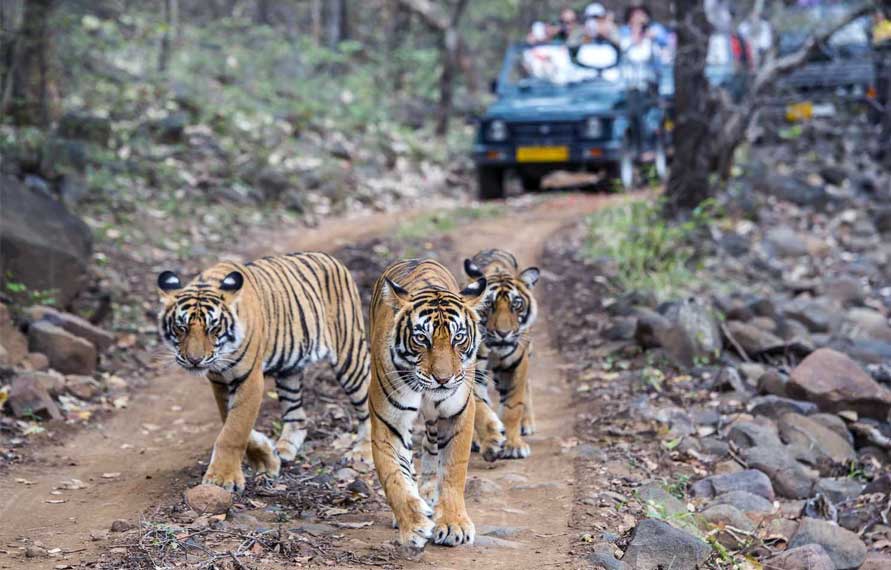
Our journey begins with Ranthambore, a park with historical significance and a treasure trove of biodiversity. As you explore the ruins of Ranthambore Fort, you might spot a tiger gracefully roaming amidst the ancient stones. The park's rich flora and fauna
enhance the overall safari experience, making it a favorite among wildlife enthusiasts.
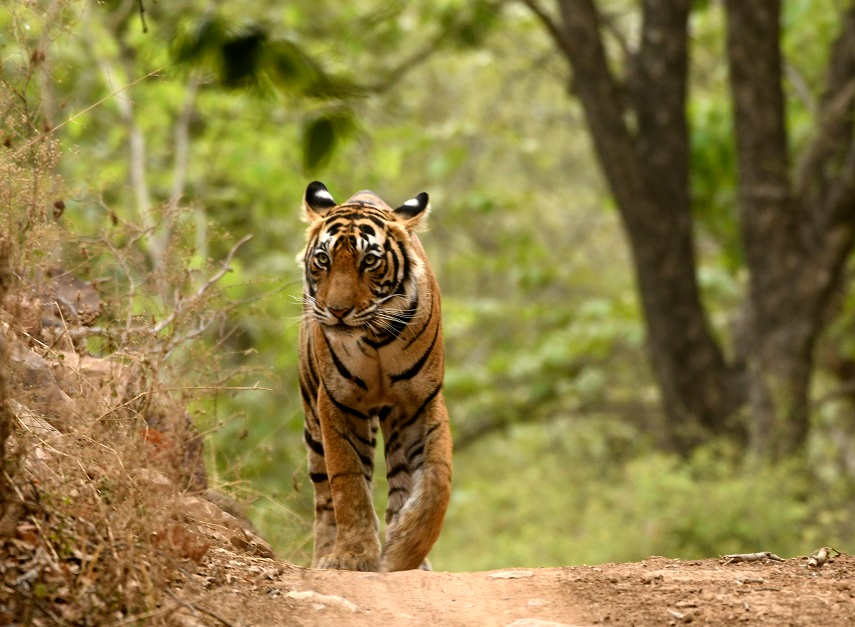
Venturing into the heart of India, we find Bandhavgarh, a park known for its lush greenery and a high population of tigers. The captivating landscapes serve as a backdrop to the thriving wildlife, offering a picturesque setting for your safari adventures. With
a significant tiger density, Bandhavgarh promises an encounter with the regal Bengal tiger.
Sundarbans National Park
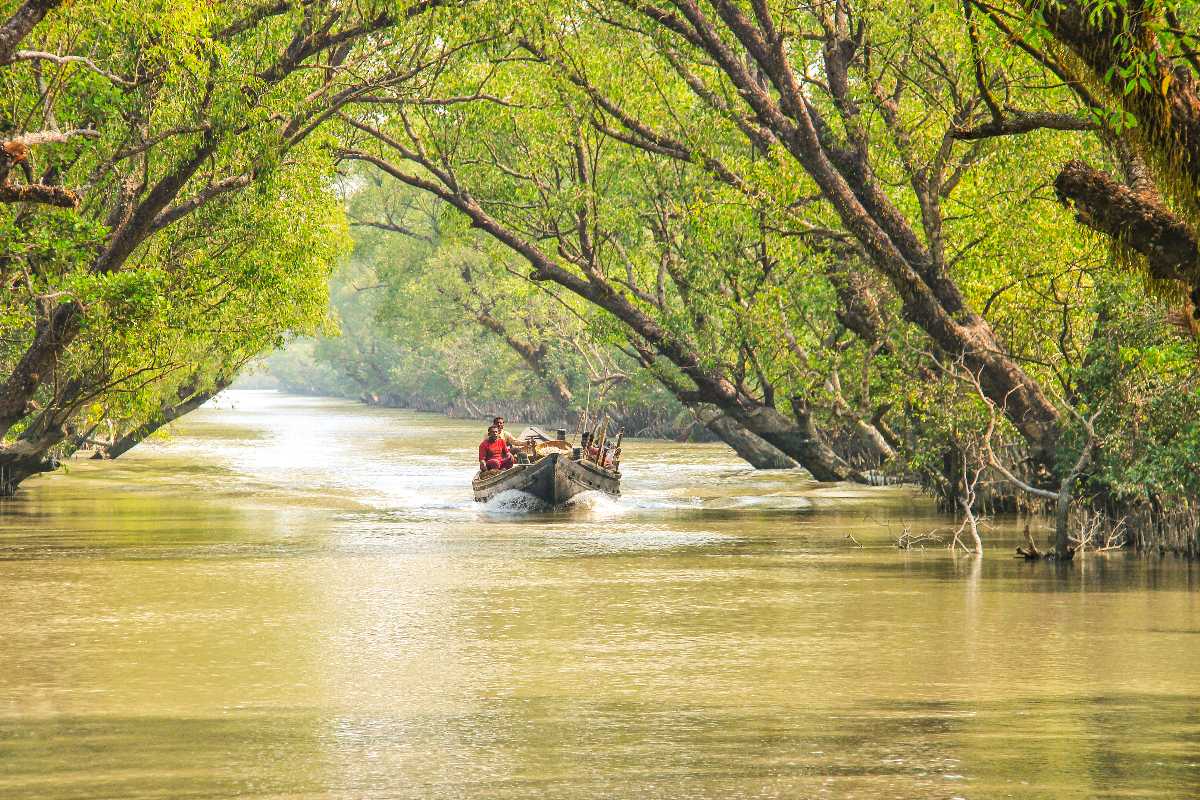
For a unique experience, head to the Sundarbans, where the mangrove ecosystem provides a dramatic setting for tiger safaris. Navigating the waterways on a boat adds an element of adventure, as you catch glimpses of rare Bengal tigers in their natural habitat.
It's a journey that combines the thrill of a safari with the tranquility of the water.
Jim Corbett National Park
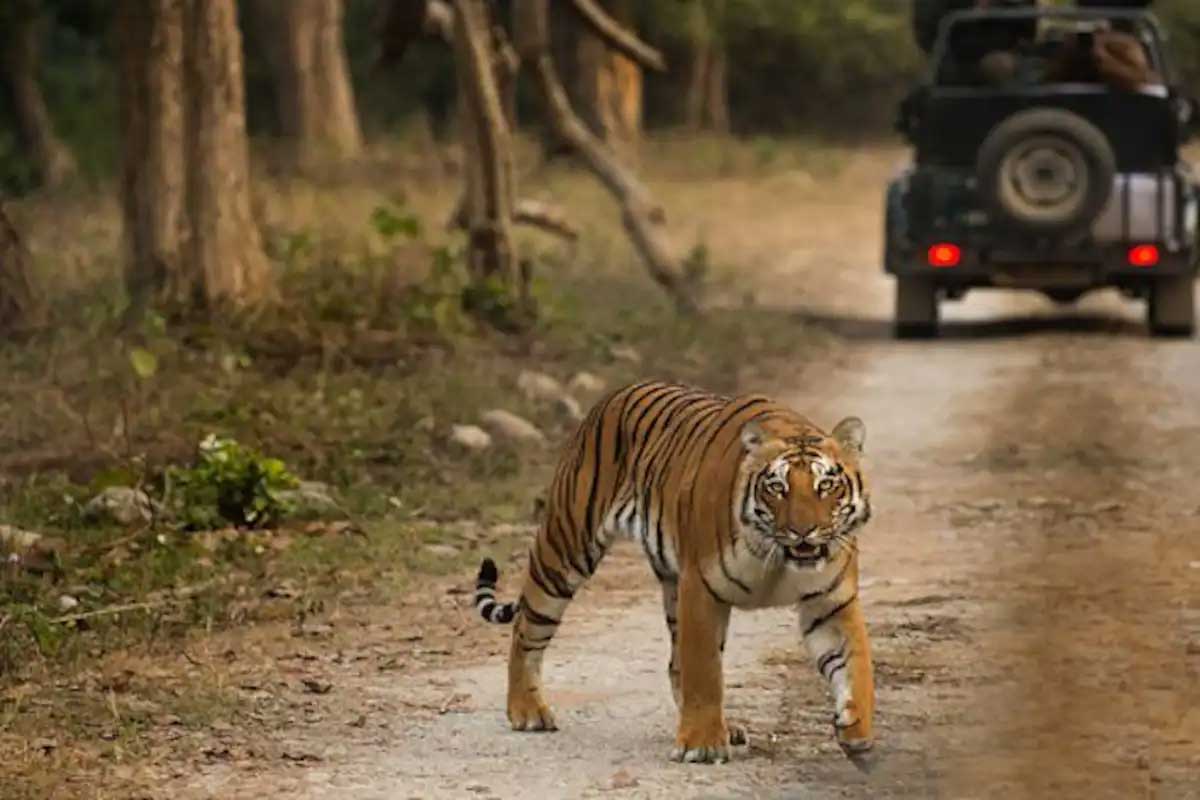
As we move towards the foothills of the Himalayas, Jim Corbett National Park welcomes us with open arms. Being the oldest national park in India, it boasts a diverse range of wildlife and landscapes. Imagine the thrill of spotting a tiger against the backdrop
of the majestic mountains, creating a scene straight out of a wildlife documentary.
For Adventure: Jim
Corbett Safari Booking
Kanha National Park

Inspired by Rudyard Kipling's "The Jungle Book," Kanha National Park enchants visitors with its lush forests and diverse wildlife. Apart from tigers, the park is home to a variety of species, contributing to the overall ecological balance. Engage in sustainable
tourism initiatives as you witness the beauty of nature unfolding before your eyes.
For Adventure: Kanha
National Park Safari Booking
Periyar National Park
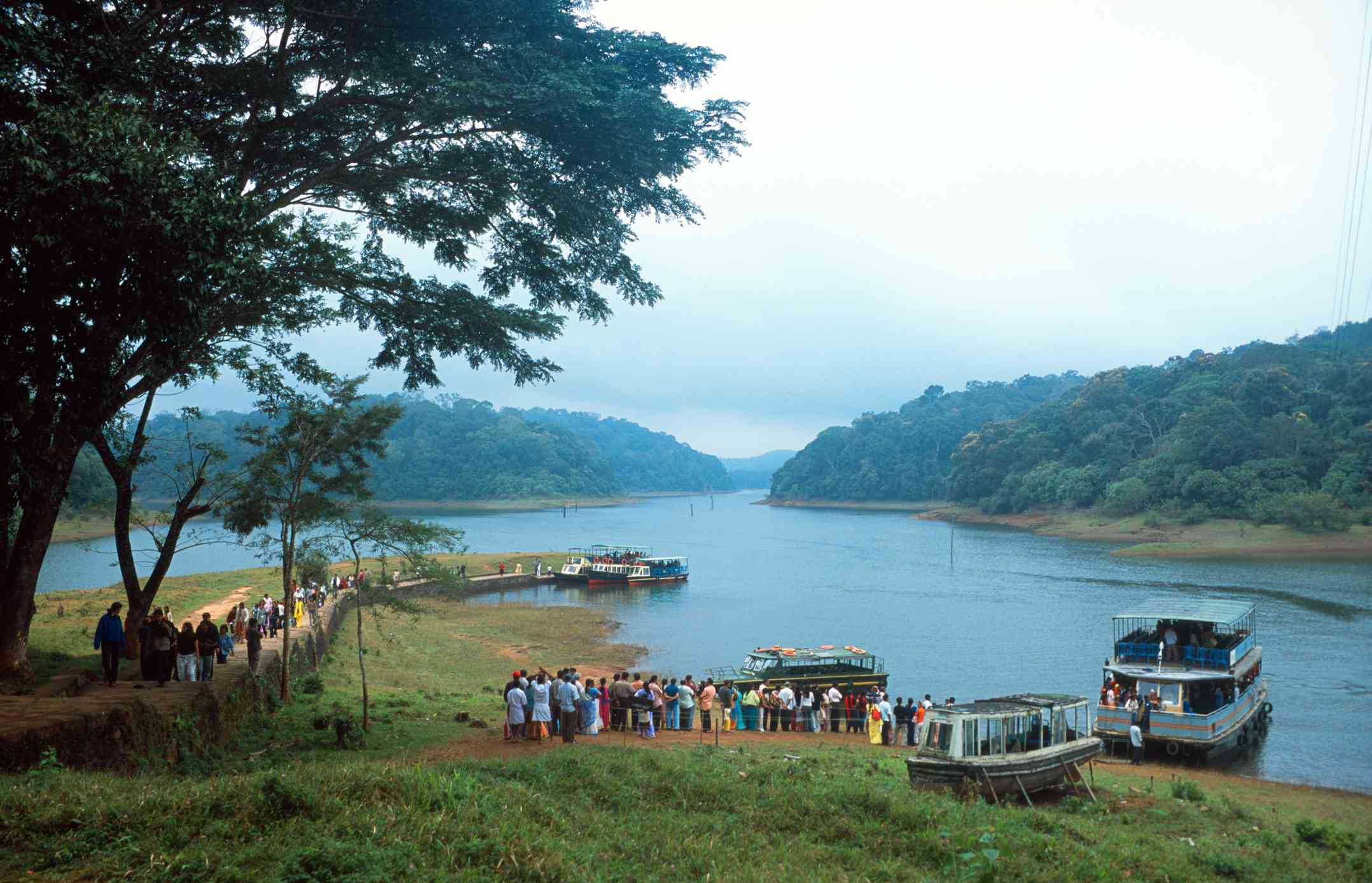
Down south, Periyar National Park captivates with its Southern charm. The highlight here is the boat safari on Periyar Lake, offering a unique perspective on wildlife. Amidst the tranquility, elephants and tigers share their habitat, creating a harmonious coexistence
that reflects the essence of responsible tourism.
Tadoba Andhari Tiger Reserve
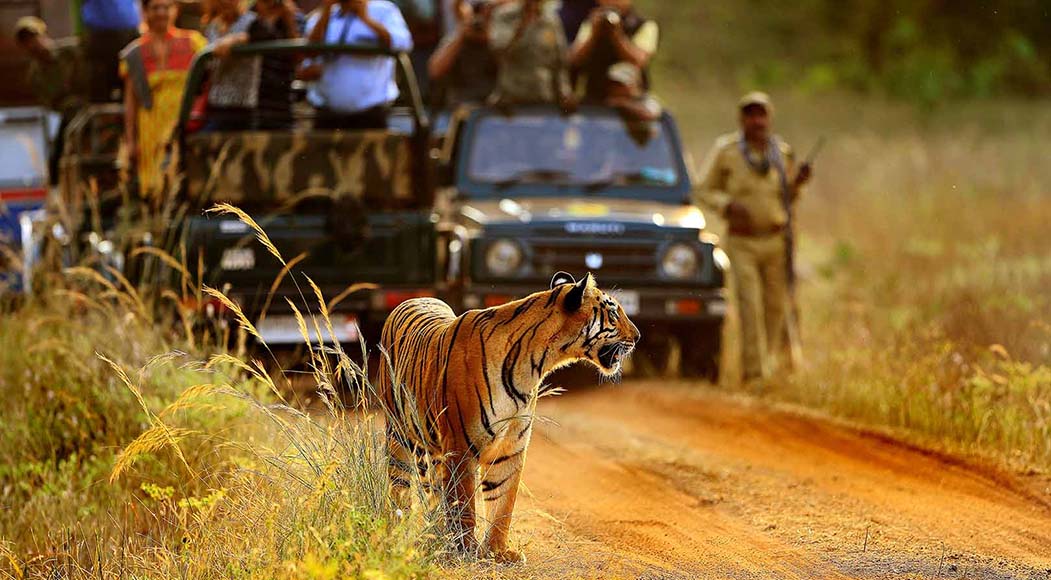
For those seeking an off-the-beaten-path adventure, Tadoba Andhari Tiger Reserve beckons. The tribal culture surrounding the reserve adds a unique cultural dimension to your safari experience. Witness the success stories of tiger conservation efforts while
immersing yourself in the raw beauty of this lesser-explored destination.
Nagarhole National Park
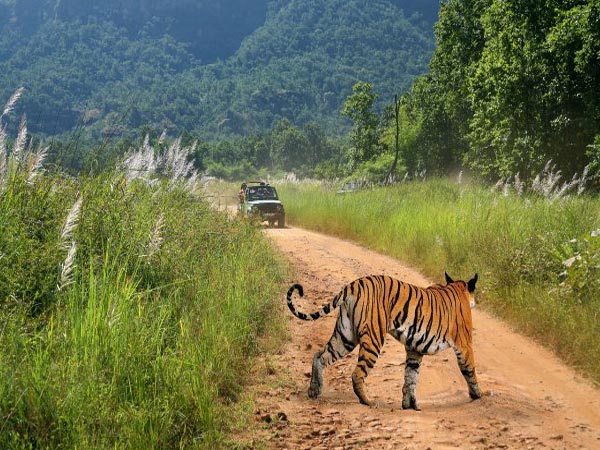
Serene landscapes await at Nagarhole National Park, where the beauty of nature unfolds at its own pace. Tigers coexist with elephants, creating a harmonious balance in this picturesque setting. Explore offbeat safari experiences that take you deep into the
heart of the forest, providing a close encounter with the untamed.
Pench National Park
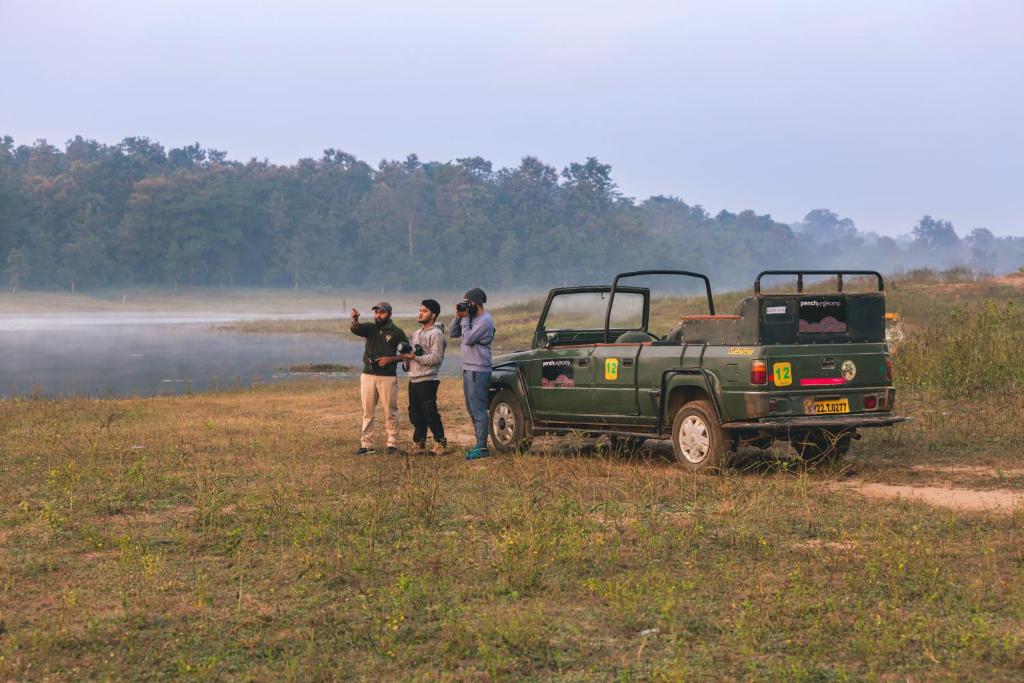
For photography enthusiasts, Pench National Park offers a canvas filled with wildlife opportunities. The park's literary connections, drawing inspiration from "The Jungle Book," add a layer of intrigue. Engage with conservation initiatives as you capture the
beauty of tigers and other inhabitants through your lens.
Sariska Tiger Reserve

Conveniently located near major cities, Sariska Tiger Reserve is an accessible yet enchanting destination. The historical Sariska Palace adds a touch of grandeur to your wildlife adventure. Witness the success stories of rehabilitation as the reserve continues
to thrive as a haven for the majestic Bengal tiger.
Panna National Park

In the heart of India, Panna National Park stands as a testament to rewilding efforts. The Ken River and waterfalls create a picturesque backdrop for your safari adventures. Immerse yourself in birdwatching opportunities and witness the rejuvenation of a landscape
through dedicated conservation initiatives.
Hemis National Park
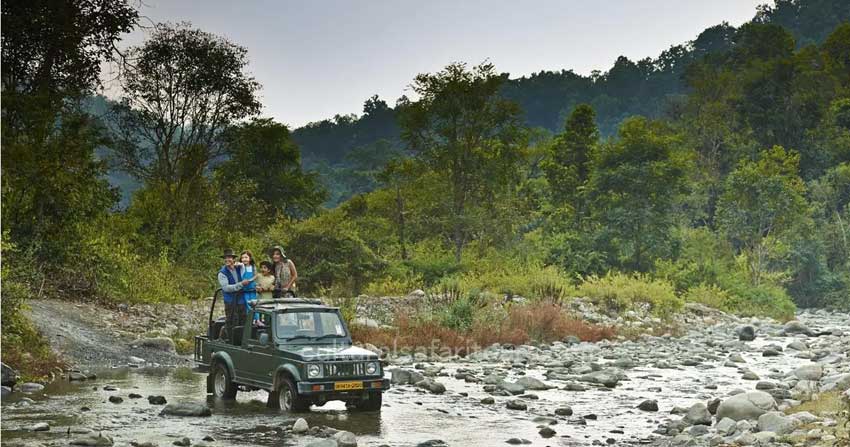
Venturing into the Himalayas, Hemis National Park offers a unique ecosystem for tiger enthusiasts. Snow leopards and tigers share the high-altitude terrain, creating a mesmerizing landscape. Dive into the cultural experiences of Ladakh while marveling at the
adaptability of these magnificent creatures.
Nameri National Park
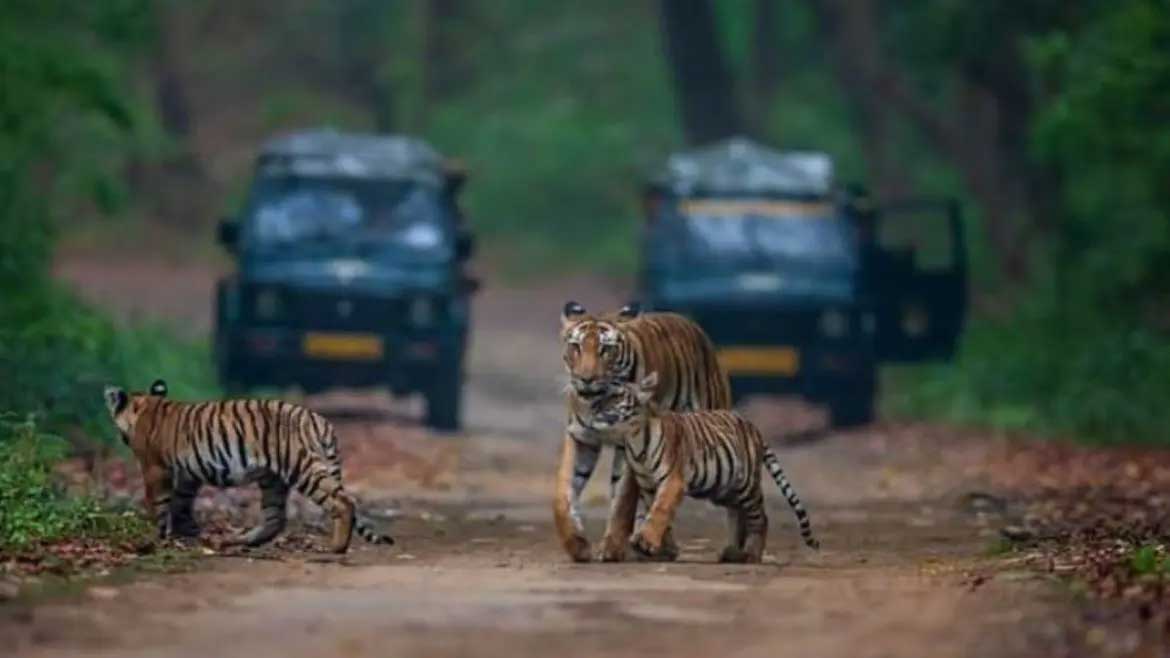
Our journey concludes in the northeastern biodiversity hotspot of Nameri National Park. The Jia Bhoroli River adds an adventurous touch to your safari, showcasing the eco-friendly tourism initiatives in the region. Explore the unique flora and fauna, marking
the end of an enriching tiger safari journey.
Conclusion
In the vast tapestry of India's wildlife sanctuaries and national parks, the best destination for tiger safaris is subjective, each offering a unique blend of experiences. Whether you prefer the historical charm of Ranthambore or the offbeat allure of Tadoba,
each destination contributes to the conservation of these magnificent creatures. As you plan your tiger safari, remember the importance of responsible tourism in preserving these ecosystems for generations to come.
FAQs
-
Is it guaranteed to spot a tiger during a safari?
-
While sightings are common, they depend on various factors, including the time of day, season, and the tiger's behavior.
-
Are there age restrictions for tiger safaris?
-
Most national parks have age restrictions to ensure the safety of visitors. Check with the specific park for their guidelines.
-
What is the best time of year for tiger safaris in India?
-
The ideal time is usually during the dry season, from October to April, when visibility is better.
-
How can I contribute to tiger conservation during my safari?
-
Many parks have initiatives for visitors to contribute to conservation efforts. Check with park authorities or local NGOs for options.
-
Are there accommodations within or near the national parks?
-
Yes, most national parks offer accommodations ranging from budget to luxury options. It's advisable to book in advance, especially during peak seasons.
|
Posted by
Sudhir Sharma
on
October 14, 2024

Sanjay Dubri National Park, nestled in the heart
of Madhya Pradesh, India, is a hidden gem for wildlife enthusiasts and nature lovers. Spanning over 1,500 square kilometers, this national park is rich in biodiversity and offers an unforgettable safari experience. Here’s everything you need to know to make
the most of your visit.
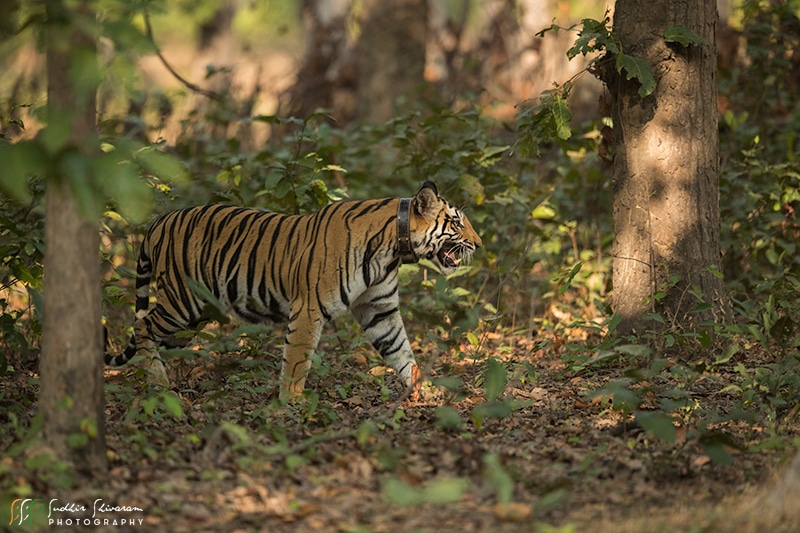
Why Visit Sanjay Dubri National Park?
-
Biodiversity: The park is home to a diverse range of flora and fauna. From majestic tigers and leopards to spotted deer and various species of birds, wildlife sightings are plentiful.
-
Unique Ecosystem: The landscape is characterized by dense forests, open grasslands, and seasonal rivers, creating a unique ecosystem that supports a wide variety of wildlife.
-
Adventure Activities: Beyond safaris, visitors can enjoy trekking, bird watching, and nature photography, making it a perfect destination for adventure seekers.
Planning Your Safari
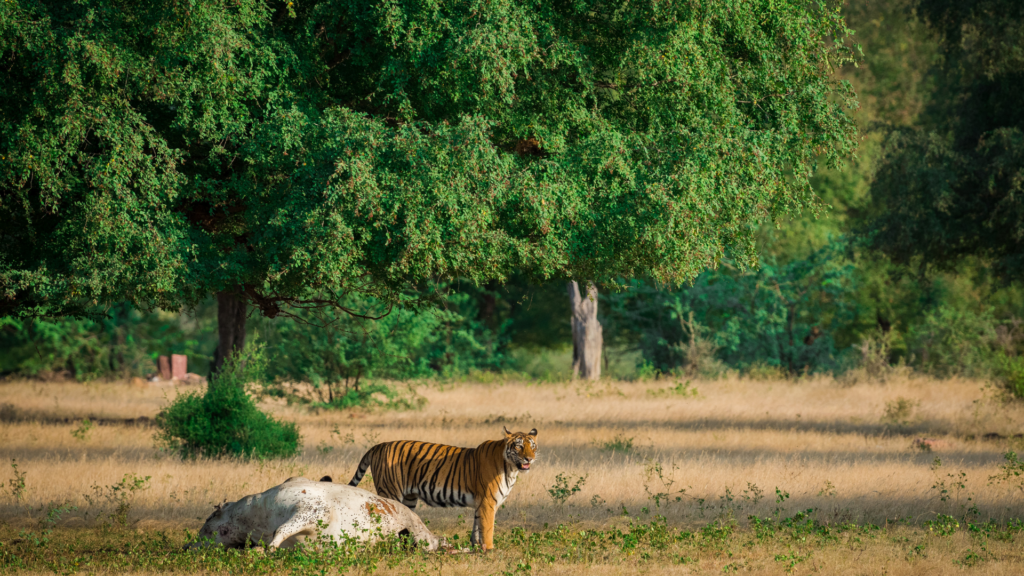
Best Time to Visit:
The ideal time for a safari in Sanjay Dubri National Park is between October and June. The weather during these months is pleasant, and wildlife sightings are more frequent as animals venture out in search of water and food.
Safari Options:
- Jeep Safaris: Explore the park in open-top vehicles, providing an unobstructed view of the wildlife and landscape.
- Guided Tours: Consider hiring a local guide who can offer insights into the park’s ecology and wildlife behavior.
What to Bring:
- Binoculars: Perfect for bird watching and spotting distant wildlife.
- Camera: Capture the beauty of the park, but remember to respect wildlife by not using flash photography.
- Comfortable Clothing: Dress in layers, wear sturdy shoes, and consider neutral colors to blend in with the environment.
Wildlife Highlights
-
Tigers and Leopards: Spotting these elusive big cats is the highlight for many visitors. Sanjay Dubri is part of a larger tiger conservation program, enhancing your chances of a sighting.
-
Bird Species: With over 250 bird species, including migratory birds, the park is a paradise for birdwatchers.
-
Flora: The park’s vegetation ranges from deciduous forests to grasslands, home to medicinal plants and unique tree species.
Accommodation Options
-
Jungle Lodges: For a more immersive experience, consider staying in eco-friendly lodges or tent accommodations within or near the park.
-
Budget Hotels: Various options are available in nearby towns for those looking for more affordable stays.
Conservation Efforts
Sanjay Dubri National Park is not just a wildlife haven; it’s also a crucial area for conservation. Efforts are underway to protect the habitat and the species that inhabit it, ensuring that future generations can enjoy its natural beauty.
Conclusion
A safari in Sanjay Dubri National Park is more than just a trip; it’s an adventure into the heart of nature. Whether you’re a wildlife enthusiast or simply looking to escape the hustle and bustle of city life, this national park offers an enriching experience.
Plan your visit today and immerse yourself in the natural wonders of Madhya Pradesh
|